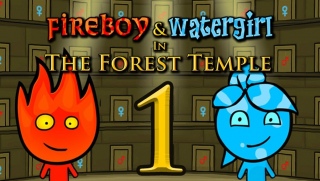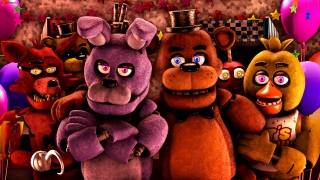MINICLIP HAS CLOSED, AND AN ERA HAS ENDED
In the 2010s, the gaming site was hugely popular with British teenagers and was a notorious part of their childhood and school life.
The site, which was launched in 2001 with a £40,000 budget, hosted hundreds of free online minigames and was valued at more than £275 million in 2008.
If you were born in the late 1990s and the early 2000s, you may recall covertly playing minigames like Fireboy and Watergirl, and Skywire in your IT classes.
Yes, Miniclip is no longer available. It's been down for a while, but many people are only now becoming aware of it.
MINICLIP IS NOW CLOSED.
The Miniclip website still exists, but there are only two games available when you visit it: 8 Ball Pool and Agar.io.
Miniclip announced plans to alter the site in March 2022, and the games were removed shortly after.
"In March, we announced the metamorphosis of Miniclip.com, marking an incredible milestone in our journey and mission to build games that millions of people across the world love to play," the company states in a blog post.
"We're excited to announce that Miniclip.com is now our principal domain, where visitors can find our latest news, corporate information, job openings, and games," reads the post titled "Miniclip.com has changed."
Miniclip chose to modify the site because many of their users want to play their favorite games on mobile devices rather than the online.
They also stated that their loyal fans can continue to enjoy two legendary titles, 8 Ball Pool and Agar.io, and that they will continue to produce and add new games in the future.
ONLINE PEOPLE ARE DEVASTATED
You probably forgot the site existed until now and haven't visited it in years, but the fact that it's gone fills you with sadness.
Don't be concerned; you're not alone. Everyone is feeling melancholy now that Miniclip is no longer available, and sorrowful tweets are flooding Twitter.
"Dude, this is sad," one person wrote. Miniclip was a significant part of my childhood. "An era has come to an end."
"Nooo, I recall playing a lot of Miniclip games after school." "What a good time," said another.
"You played your last game on Miniclip without knowing it was your last game on Miniclip," a third individual commented.
"End of an era guy, first Cartoon Network, now Miniclip, our childhoods are being wiped right before our eyes," another user tweeted.
YOU CAN STILL PLAY SOME GAMES ON YOUR MOBILE DEVICE.
Miniclip claims that "there are no plans to bring back additional games online," although many people are unaware that you can still play many of the old games on your phone!
Although not every Miniclip game is available, many of the more sophisticated ones have an app that can be downloaded from the App Store.
The site, which was launched in 2001 with a £40,000 budget, hosted hundreds of free online minigames and was valued at more than £275 million in 2008.
If you were born in the late 1990s and the early 2000s, you may recall covertly playing minigames like Fireboy and Watergirl, and Skywire in your IT classes.
Yes, Miniclip is no longer available. It's been down for a while, but many people are only now becoming aware of it.
MINICLIP IS NOW CLOSED.
The Miniclip website still exists, but there are only two games available when you visit it: 8 Ball Pool and Agar.io.
Miniclip announced plans to alter the site in March 2022, and the games were removed shortly after.
"In March, we announced the metamorphosis of Miniclip.com, marking an incredible milestone in our journey and mission to build games that millions of people across the world love to play," the company states in a blog post.
"We're excited to announce that Miniclip.com is now our principal domain, where visitors can find our latest news, corporate information, job openings, and games," reads the post titled "Miniclip.com has changed."
Miniclip chose to modify the site because many of their users want to play their favorite games on mobile devices rather than the online.
They also stated that their loyal fans can continue to enjoy two legendary titles, 8 Ball Pool and Agar.io, and that they will continue to produce and add new games in the future.
ONLINE PEOPLE ARE DEVASTATED
You probably forgot the site existed until now and haven't visited it in years, but the fact that it's gone fills you with sadness.
Don't be concerned; you're not alone. Everyone is feeling melancholy now that Miniclip is no longer available, and sorrowful tweets are flooding Twitter.
"Dude, this is sad," one person wrote. Miniclip was a significant part of my childhood. "An era has come to an end."
"Nooo, I recall playing a lot of Miniclip games after school." "What a good time," said another.
"You played your last game on Miniclip without knowing it was your last game on Miniclip," a third individual commented.
"End of an era guy, first Cartoon Network, now Miniclip, our childhoods are being wiped right before our eyes," another user tweeted.
YOU CAN STILL PLAY SOME GAMES ON YOUR MOBILE DEVICE.
Miniclip claims that "there are no plans to bring back additional games online," although many people are unaware that you can still play many of the old games on your phone!
Although not every Miniclip game is available, many of the more sophisticated ones have an app that can be downloaded from the App Store.


